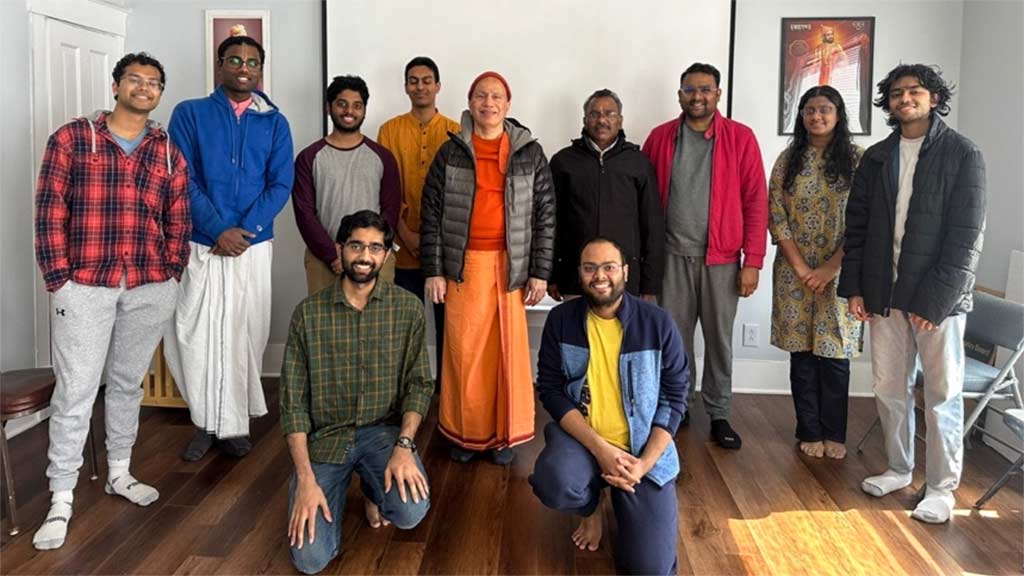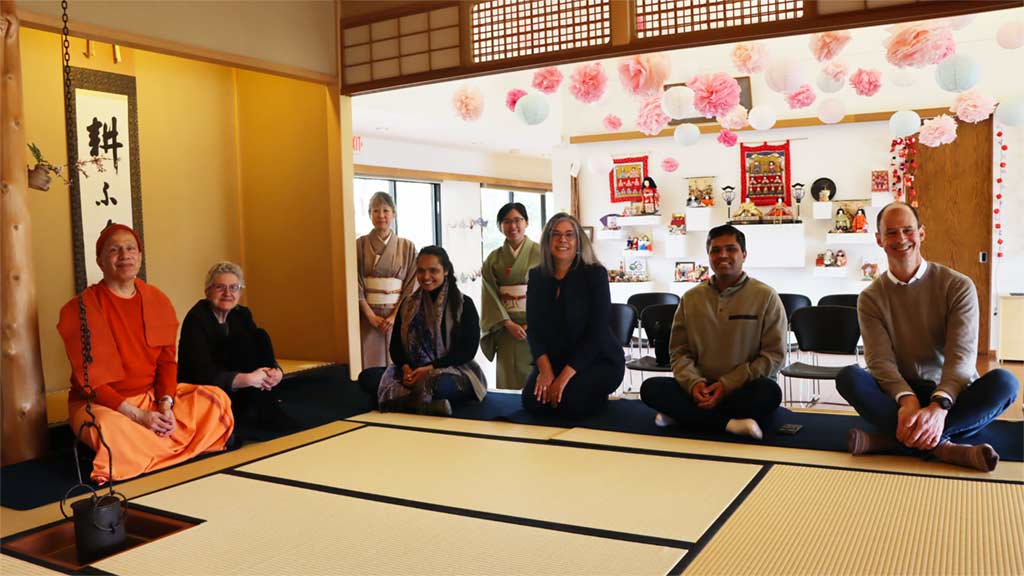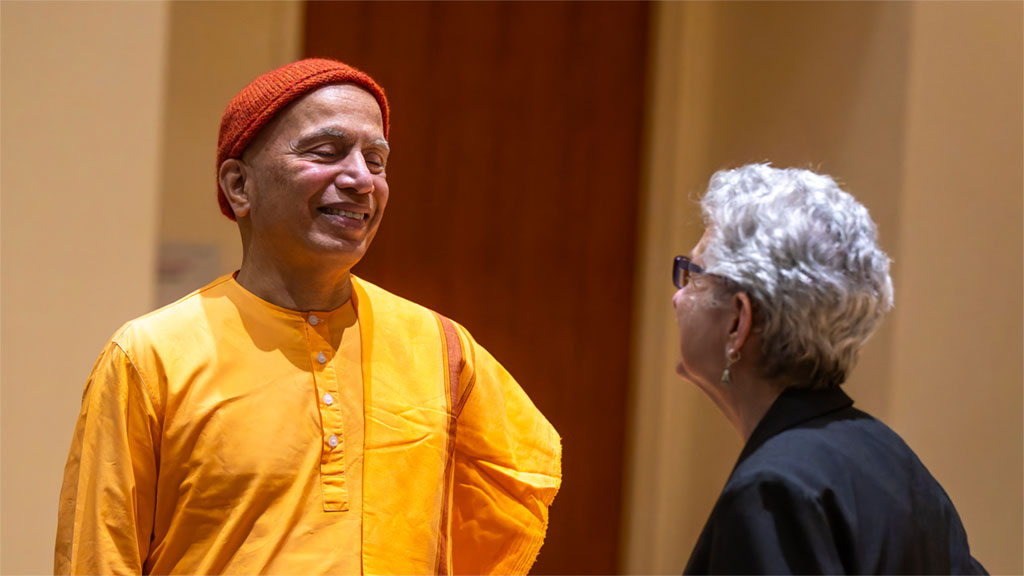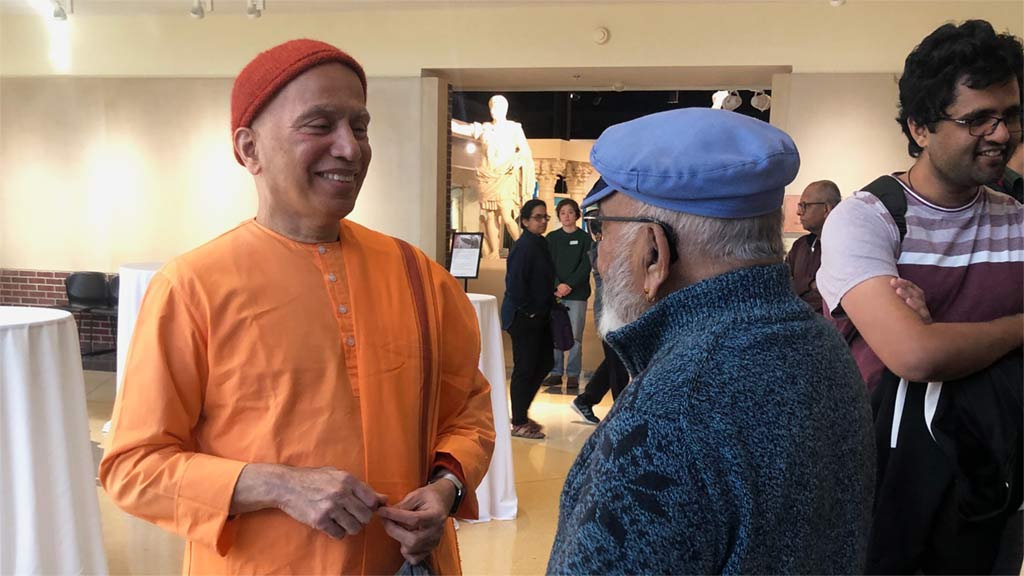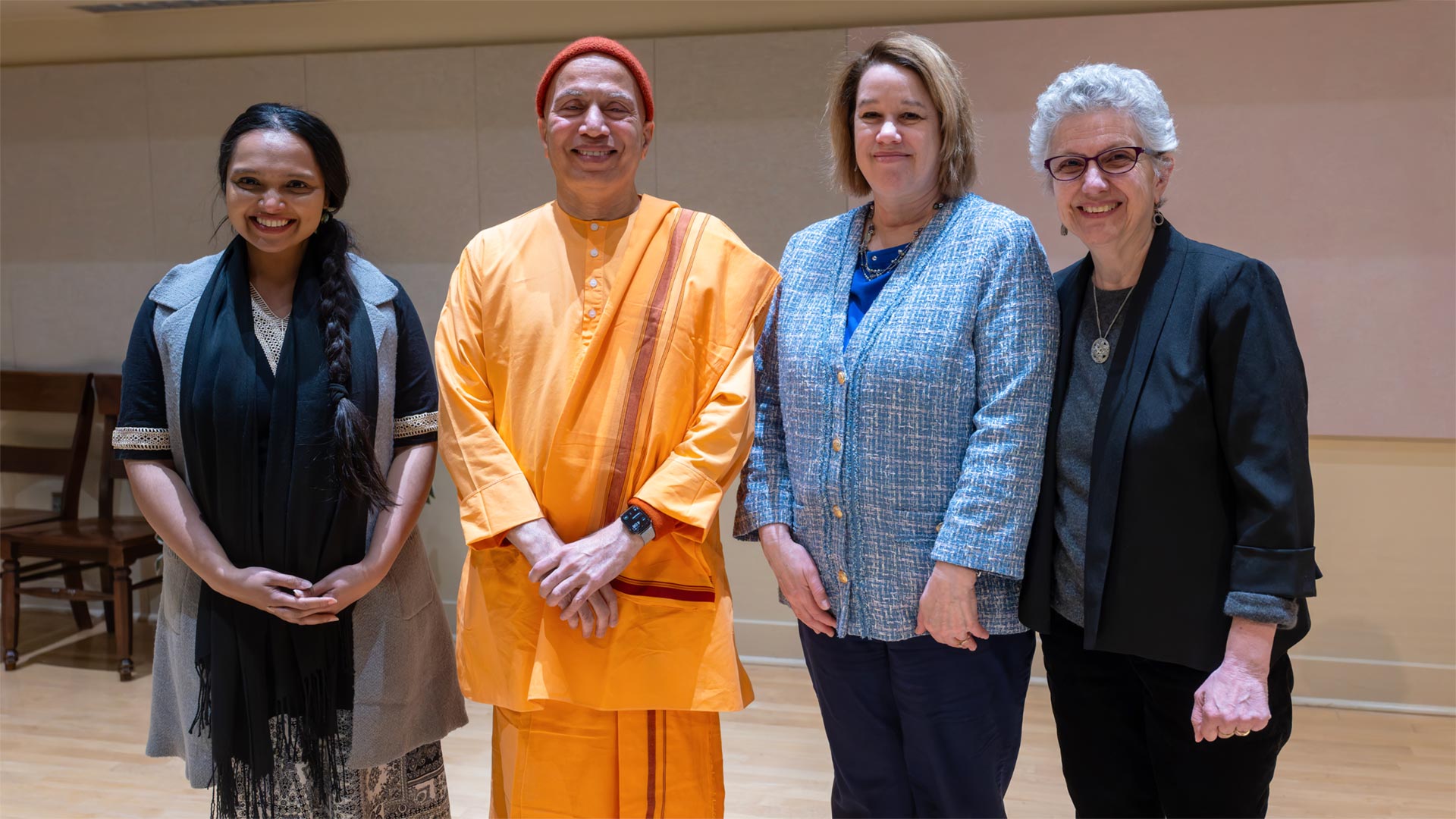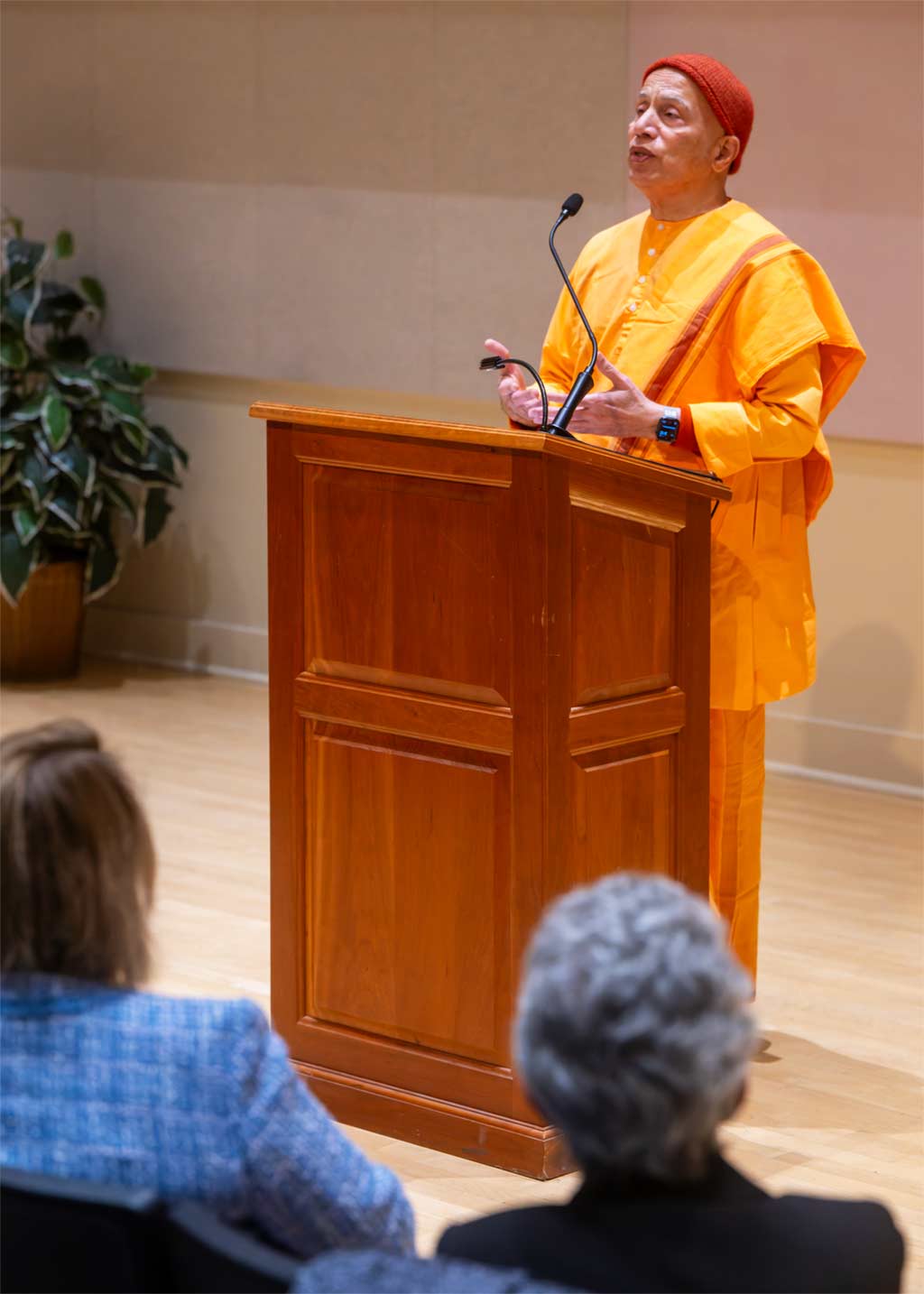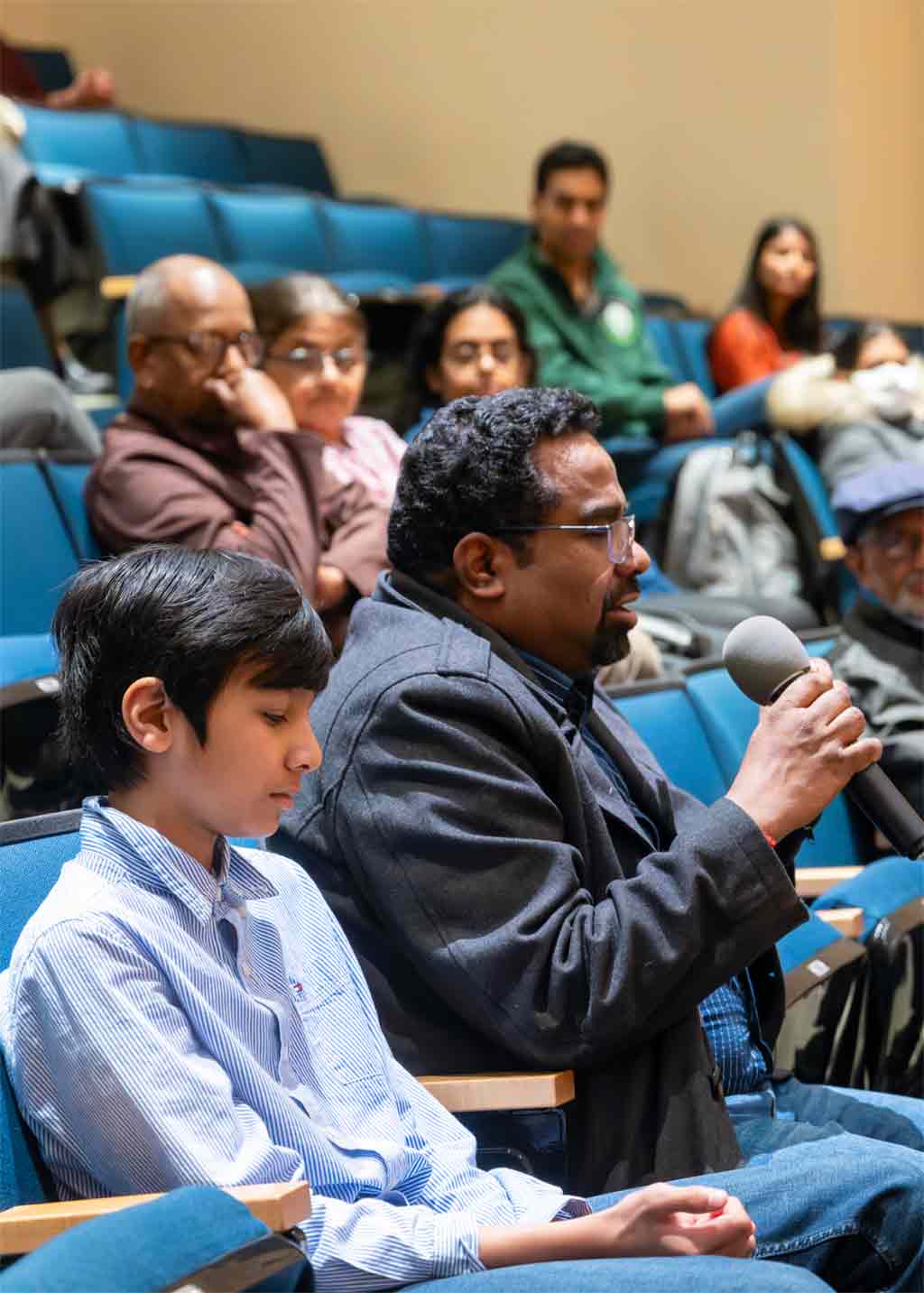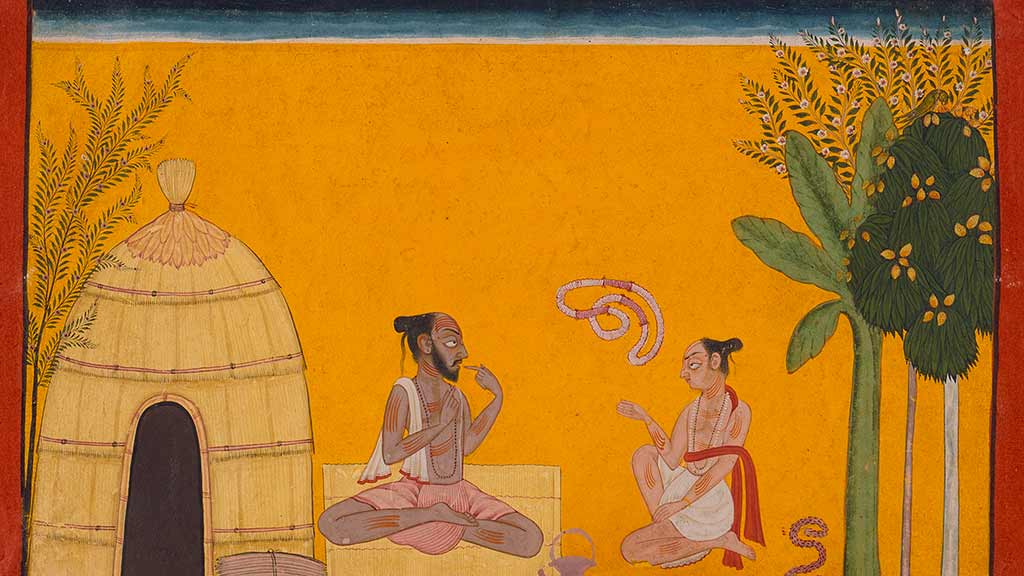
The Vālmīkī Rāmāyana: A Timeless Hindu Tale at the Spurlock Museum of World Cultures
- Post Date: 07/29/2024
- Author: Divya Nair, Mellon Post-Doctoral Fellow in Humanities as Social Practice, Humanities Research Institute at Illinois
- Reading Time: 7 minute read
- The Story of Vālmīkī Rāmāyana
- Global Receptions of the Rāmāyana
- The Vālmīkī Rāmāyana: A Timeless Hindu Tale at the Spurlock Museum of World Cultures
Organized in partnership with the Humanities Research Institute and the Spurlock Museum at the University of Illinois Urbana-Champaign, "The Vālmīkī Rāmāyana: A Timeless Hindu Tale" was a katha/storytelling circle that met between January and April 2024 at the museum. The program consisted of two parts: a weekly storytelling program focusing on each episode of the Rāmāyana and a public program featuring the revered Swami Tyagananda of the Vedanta Society of Boston and Hindu Chaplain at MIT and Harvard.
The storytelling circle met on Saturday mornings and drew a diverse group including undergraduates, graduate students, faculty, and community members. Each week focused on a different kānda (phase) of the story, engaging with central characters, moral dilemmas, and ethical principles. It also included explorations of Rāmāyana paintings at the Metropolitan Museum of Art(external link) and the National Museum, New Delhi(external link), a sampling of musical renderings of the Rāmāyana by classical Indian vocalists, a display on Rāmāyana-related collections at Spurlock, and a faculty talk by Adam Newman, Assistant Professor of Religion at UIUC. Participants shared their interpretations of the Rāmāyana. Many emphasized that they grew up listening to their family and community narrate the Rāmāyana in their homes as children.
In March, we were privileged to be joined by the revered Swami Tyagananda, Head of the Vedanta Society of Boston and Hindu Chaplain at Harvard and MIT. Swami Tyagananda has been a monk in the Ramakrishna Order since 1976 and has served in monasteries throughout India. He has been in Boston since 1998. He received spiritual instruction (mantra-dīkṣā) from Holy Mother Sarada Devi’s disciple Swami Vireswarananda, the 10th president of the Ramakrishna Order(external link), and has written and translated 14 books. Swami Tyagananda’s visit began with a satsang, a spiritual gathering, at the Champaign Hindu Temple. On Sunday, he had a brief tour of campus.
He attended a private tea ceremony with faculty members Antoinette Burton, Nancy Castro, Harshal Mahajan, and Jonathan Ebel at the Japan House(external link). Seated low on the tatami, our hosts at the Japan House, Jennifer Gunji-Ballsrud and Ms. Diana Liao, taught us the Chado, or the Way of Tea, in the Urasenke tradition. We were instructed how to consume a bowl of matcha and wagashi, a traditional Japanese sweet, and relate to one another according to the 4 precepts of the Way of Tea put forth by Sen Rikyu in the 16th century: wa, kei, sei, jaku, or harmony, respect, purity, and tranquility. The tea ceremony was accompanied by a walk around the traditional Japanese garden(external link) encircling Japan House. Swami Tyagananda was pleased to discover that Tenshin Okakura, a noted sumi-e or ink wash(external link) artist, had published The Book of Tea (1906), which was presented to him by Gunji-Ballsrud. In 1901, Okakura became familiar with Josephine MacLeod an American disciple of Swami Vivekananda, who founded the Ramakrishna Order to which Swami Tyagananda belongs, and later visited(external link). Buddhist sites across India with Swami Vivekananda. Connections between Indian culture and Japanese culture are ancient. Tea was followed by lunch with students at Vivekananda House(external link), a center for Hindu students and the local Hindu community.
Swami Tyagananda’s lecture was held at the museum. The program was introduced by Dr. Susan Martinis, Vice Chancellor for Research & Innovation; Antoinette Burton, Maybelle Leland Swanlund Endowed Chair and Director of the Humanities Research Institute, which was the primary sponsor of the program; and Divya Nair, Mellon Postdoctoral Fellow in the Public Humanities as Social Practice at the Humanities Research Institute.
Titled “Learning from Rāmāyana,” Swamiji’s lecture emphasized the importance of the Rāmāyana storytelling tradition and highlighted the relevance of its main teachings for humanity today. The audience of students, faculty, administrators, and community leaders had the opportunity to dialogue with Swami Tyagananda during the reception following his lecture.
-
- Share: 𝕏
- Subscribe to Newletter
- Giving
